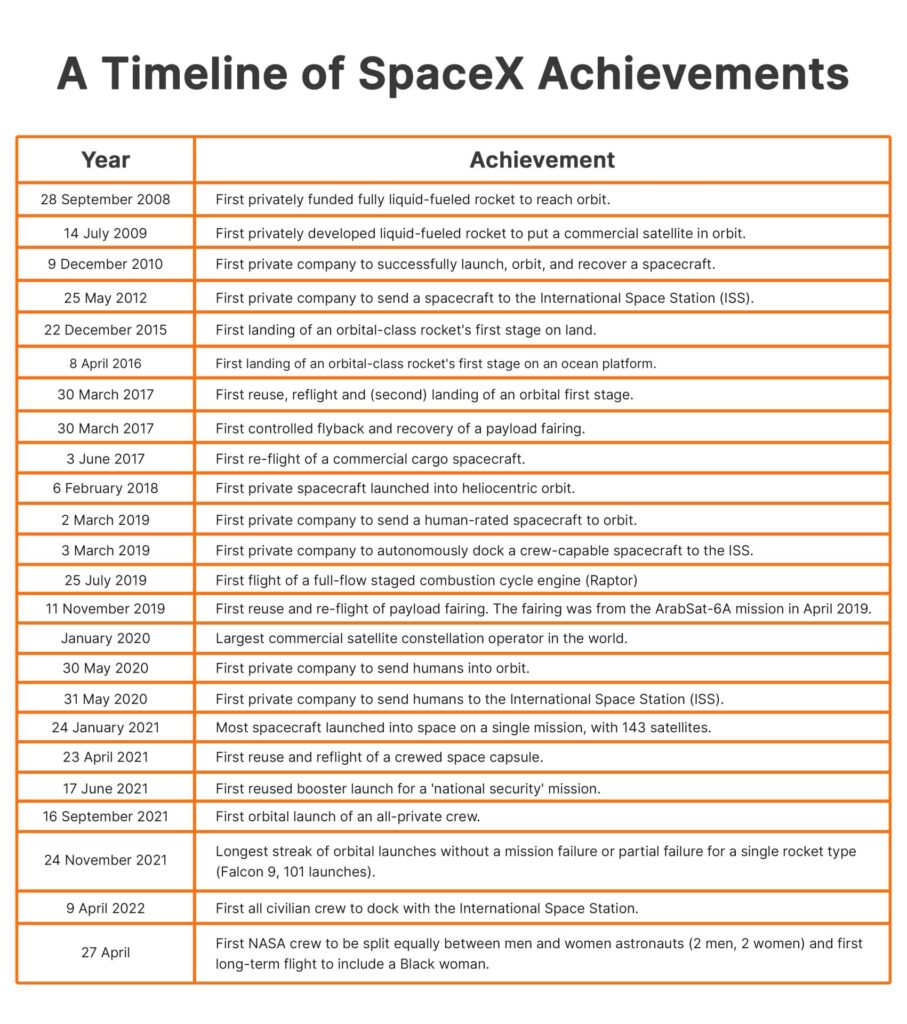Blog Post
Elon Musk And His Disruptive Innovation
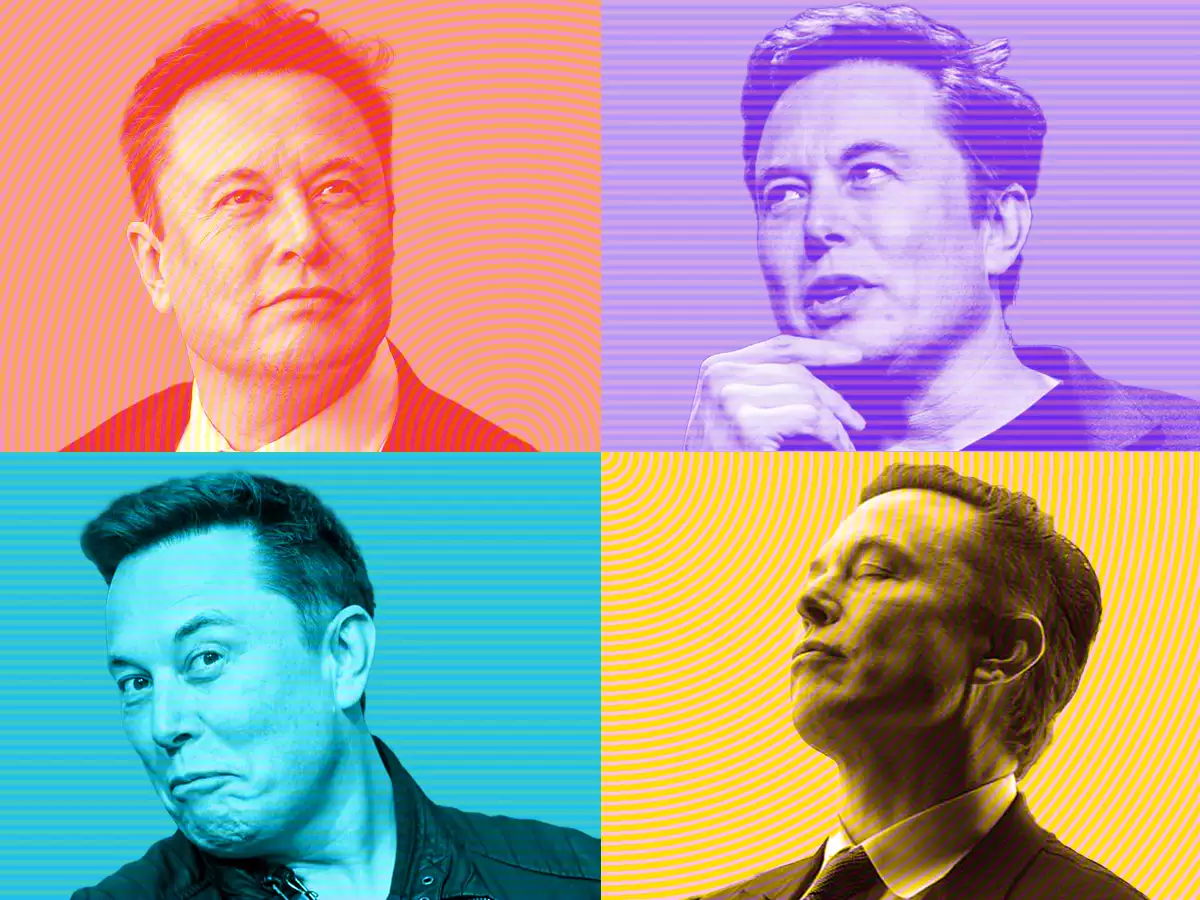
Introduction
Elon Musk is a behemoth of the entrepreneurial world. Not only has he built an empire, but constantly innovates in multiple industries across the board. Starting from Zip2 and X.com (which became PayPal) — Elon Musk has come to be the epitome of ‘disruptive innovation.’ He has had his fingers in each of the technologies we use today. From electric vehicles, to space travel, to artificial intelligence, and recently Twitter. Elon’s Twitter deal, however, is still on hold until the publication of this article.
This blog post here covers information on the following topics with relevance to Elon Musk:
- All You Need To Know About Elon Musk’s Current Companies
- SpaceX
- Tesla
- The Boring Company
- Conclusion
All You Need To Know About Elon Musk’s Current Companies
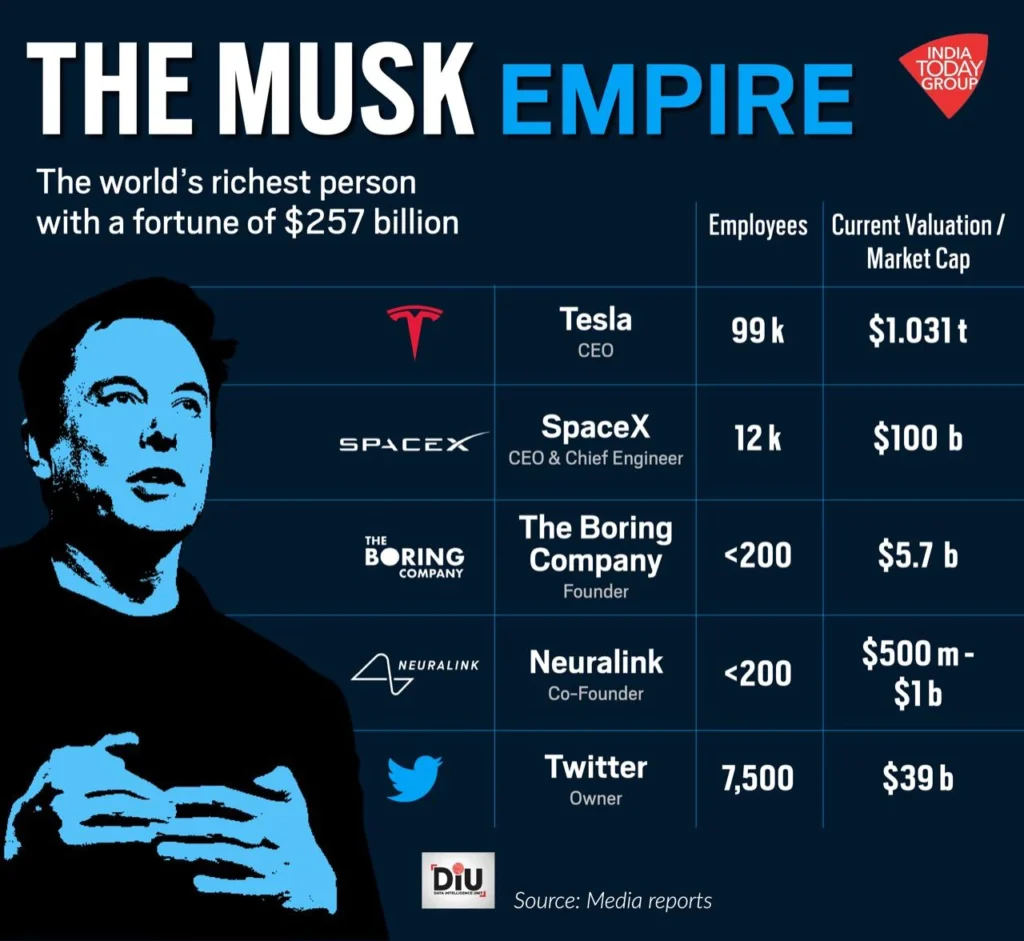
Fig 1: Elon Musk’s empire of companies and their current valuation. (source)
Elon Musk is a name you can’t miss these days.
The man who is credited with the electric vehicle revolution, who has created the biggest privately-owned aerospace company, and whose venture will build tunnels under major cities, is one of the most newsworthy people in the world right now.
But what are his intentions? How is he going to get there? And most importantly, can he do it?
In this post, we’ll discuss four of Elon Musk’s companies—Tesla, SpaceX, The Boring Company, and his recent bid to buy Twitter. And analyze whether or not they’re going to be successful in achieving their missions. So if you’re curious about Elon Musk’s ventures. OR just want to know whether you should invest in one of his companies (or start tweeting like him), read on!
1). SpaceX
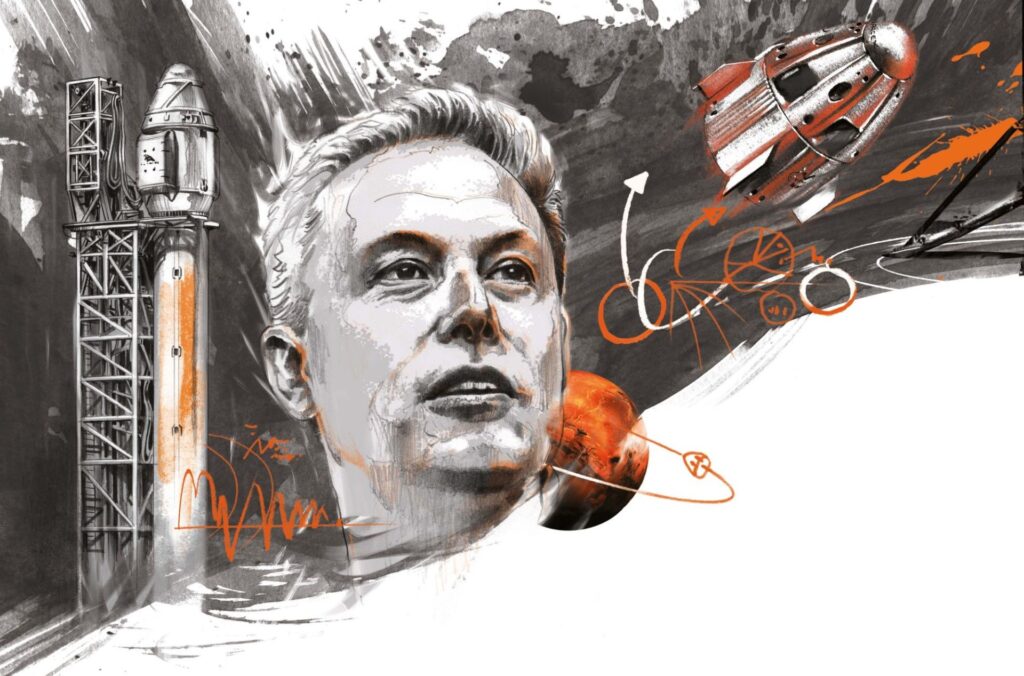
Fig 2: Image Source
SpaceX is a United States space transport services company founded by Elon Musk in 2002.
The organization’s primary purpose is to reduce space transportation costs and enable the colonization of Mars.
It has developed Falcon 9, the world’s first partially reusable heavy-lift launch vehicle; Dragon, a free-flying, reusable spacecraft; and Falcon Heavy, the world’s most powerful rocket.
SpaceX has also manufactured and launched the first commercial spacecraft to visit the International Space Station (ISS) as part of NASA’s Commercial Orbital Transportation Services program.
Elon Musk began SpaceX intending to reduce space transportation costs to enable the colonization of Mars. To achieve this goal, SpaceX developed the Falcon 9 launch vehicle family and the Dragon multipurpose spacecraft.
In 2012, SpaceX was awarded a contract from NASA to continue developing Dragon, with the ultimate goal of transporting astronauts to the ISS.
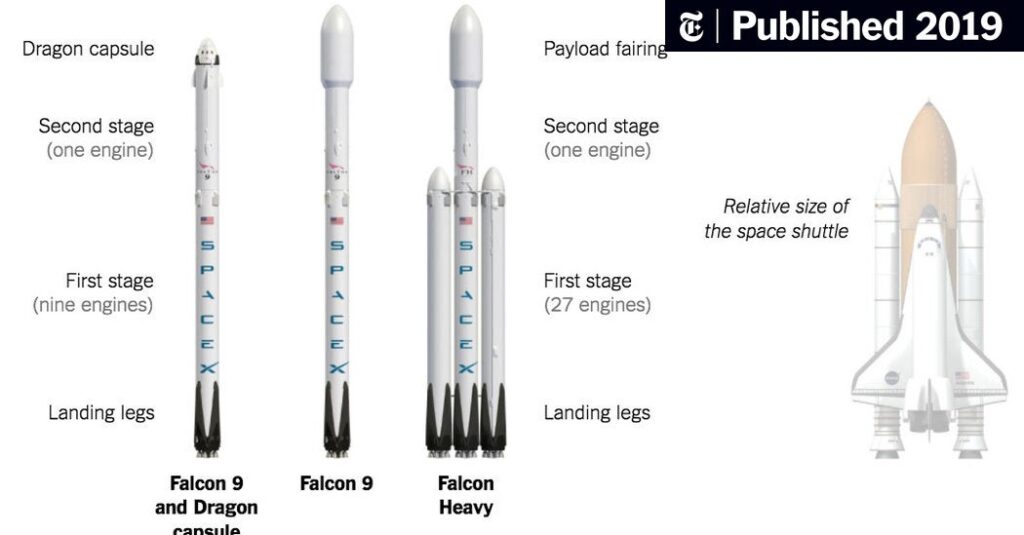
In April 2019, New York Times stated that “SpaceX routinely flies two versions of its Falcon 9 rocket, one to carry NASA cargo to the International Space Station and one to lift satellites into Earth orbit.” Source
On May 30th, 2020, SpaceX became the first private company in history to launch humans into orbit, when astronauts Doug Hurley and Bob Behnken flew on Dragon using a Falcon 9 rocket.
What is Elon Musk’s master plan for SpaceX?
The real reason Elon Musk started SpaceX was to make humanity an interplanetary species.
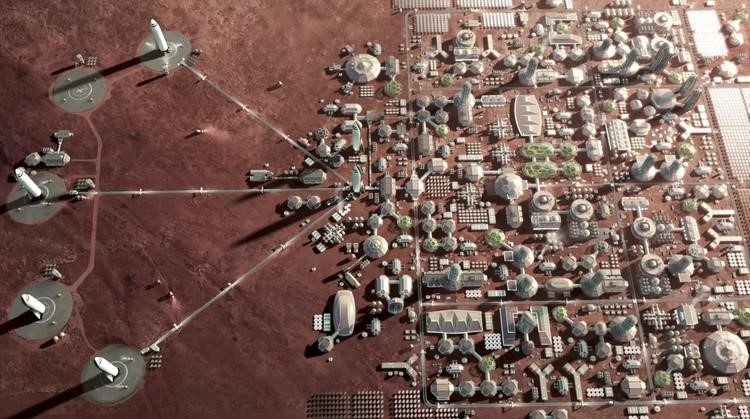
Fig 3: Elon Musk’s idea of colonization on Mars by 2069. (source)
Elon Musk believes that if we don’t get off this planet, the human race will go extinct. He thinks that eventually, either (1) we’ll run out of resources and die, or (2) we’ll destroy ourselves with nuclear weapons in a war over those resources.
That is why he wants to build a city on Mars. Elon Musk sees a future where humans live on Mars. But also come back and forth between Mars and Earth frequently.
He sees a future where there are millions of people living on Mars—a fully self-sustaining civilization.
SpaceX is currently developing and testing their Starship rocket and Super Heavy booster with the ultimate goal of using them to send people to Mars. The Starship will be able to hold 100 passengers, but will also be capable of short-distance trips within Earth’s atmosphere. Musk has spoken about his desire to use Starship to colonize not just Mars. but other parts of our solar system as well.

Fig 4: The cost distribution chart of different spacecrafts and what makes SpaceX spacecraft the most favored option by NASA. (source)
Will SpaceX be able to achieve its mission?
Elon Musk, founder and CEO of SpaceX, is not just confident that his company will be able to send people to Mars. He’s also confident that they’ll be able to do it by 2029.
Musk claims that for a planet like Mars to be colonized, it must support 1 million people. For that many people to live there, the planet would need to support an economy and be self-sustaining. To get that done, he hopes to launch Starship—a reusable rocket that the company has been developing—in the next couple of years.

Fig 5: The SpaceX Business Plan from Point A to Point B. (source)
In 2023, SpaceX will launch Japanese billionaire Yusaku Maezawa into outer space (and beyond) via the Starship. “I choose to go to the moon with artists,” Maezawa said in announcing the mission. He has invited six to eight artists from different fields like painting and music along with him as part of a project called dearMoon. The moon trip will last five days and circle around the moon before returning home.
If all goes well, the company will continue to perform developments on the Starship and eventually use it as a means to begin the first human colonization of Mars by 2029.
Musk is optimistic that in 2029, humans should start building the first Mars city. And by 2060 there would have been enough infrastructure built on the red planet to support a population of a million people.
But on the contrary…
The majority of scientists think SpaceX’s plan to colonize Mars will fail because of the dangers present on the planet. But Musk is firmly behind his mission. Even if Elon Musk doesn’t succeed, most believe that SpaceX will still have a bright future. Experts predict that the company will instead become known for its space tourism services, rather than its interplanetary ambitions.
SpaceX’s Recent Investments & Current Valuation
With its most recent funding, SpaceX has joined the ranks of the world’s rare “hectocorn” companies, which are private businesses valued at $100 billion or higher.
SpaceX’s share price has jumped 33% higher from $420 apiece to $558, and its total raised in 2021 was $1.5 billion. Its most recent funding was $337 million in December 2021.
SpaceX currently has 10,000 employees and 109 investors who are all eager to see what new projects Elon Musk will come up with next.
2). Tesla
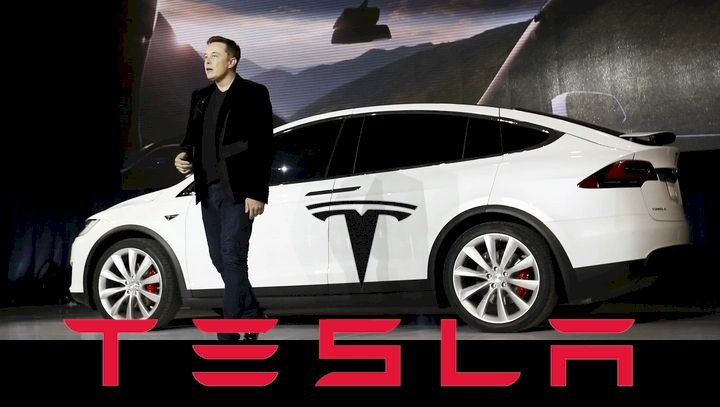
Fig 06: Image Source
Tesla Motors is an American company headquartered in Palo Alto, California. In the past decade, they have become a global leader in electric vehicles, solar panels, and photovoltaic products.
Tesla began as a startup that was focused on building electric cars. The company’s CEO, Elon Musk, has been very involved in building these cars—he has helped design them himself using CAD software.
Their first car was the Tesla Roadster, which went into production in 2008 and quickly became the world’s fastest production car. This vehicle ran on lithium-ion batteries (which were more powerful than other types of batteries at the time) and could go from 0 to 60 mph in less than four seconds.
By the end of 2021, Tesla has sold over 1,917,450 electric vehicles globally (since the company’s inception) and is now producing some of its solar panels for use on roofs or in parking garages (where there isn’t enough sun exposure). The company also offers battery packs for energy storage systems like those found at homes and businesses.
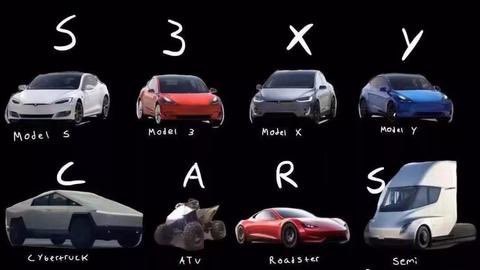
Fig 07: All of Tesla’s products acronymize to spell sexy cars. (source)
What is Elon Musk’s master plan for Tesla?
Elon Musk’s master plan for Tesla can be summed up in a few words: to accelerate the advent of sustainable energy so that we can imagine a world without fossil fuels. Because, as Musk describes it, “our goal when we created Tesla a decade ago was the same as it is today: to accelerate the advent of sustainable energy.”
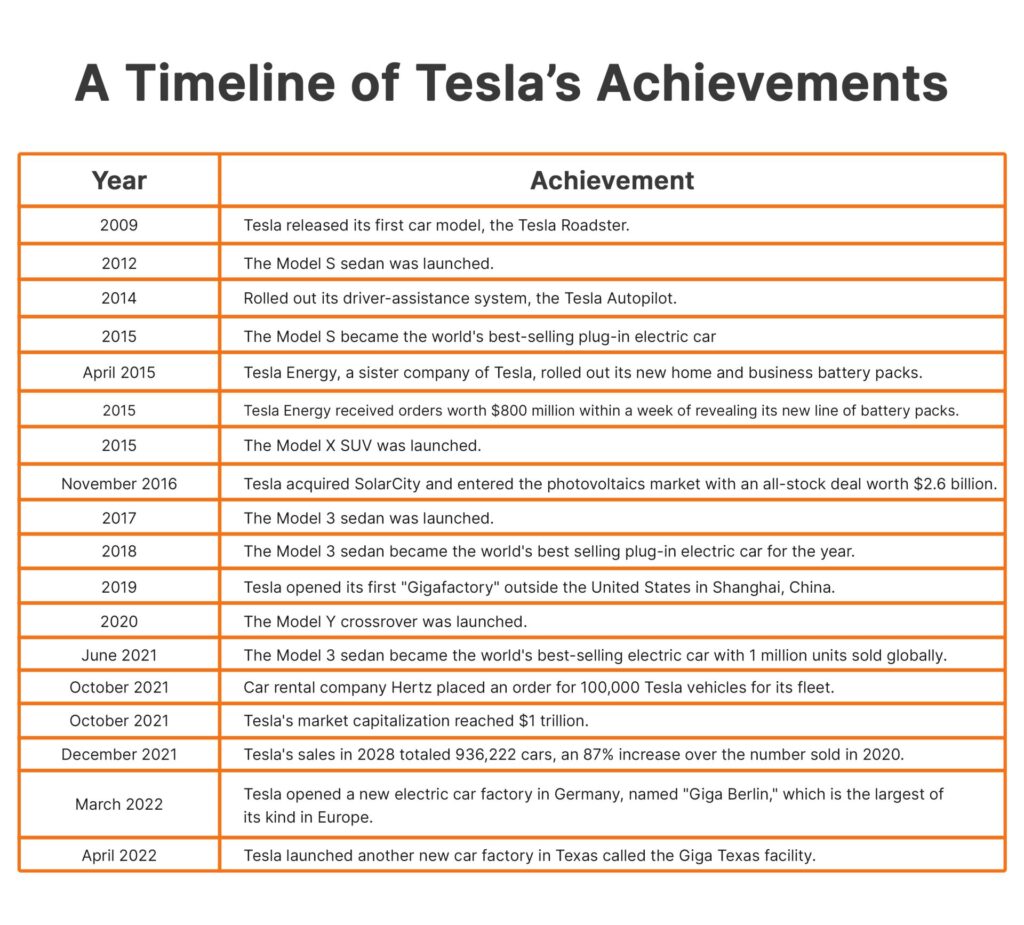
Source: Wikipedia
Will Tesla be able to achieve its mission?
Elon Musk, the CEO of Tesla Motors, has a mission to change the world by promoting sustainable transport with high-end electric cars that can compete with gasoline-powered vehicles in terms of performance and price. His goal is to make electric cars more affordable and accessible to everyone. He also wants to use solar energy as a source of renewable power for his company’s automotive products.
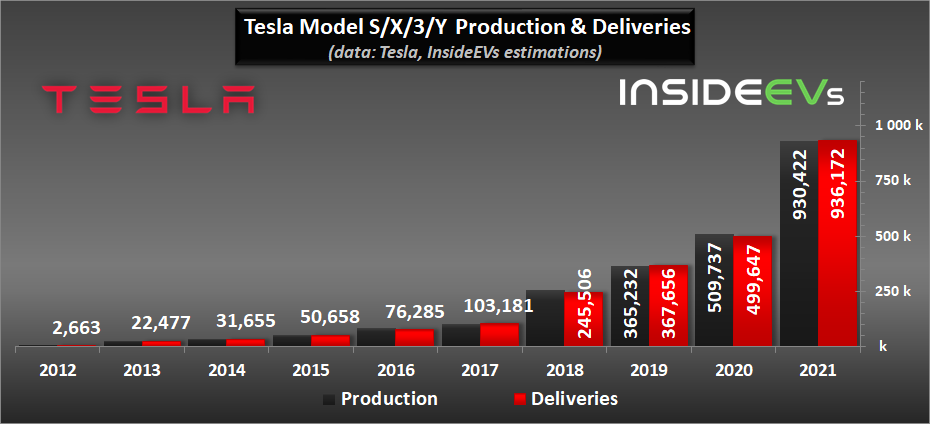
Fig 08: The chart shows a surge in Tesla’s production and deliveries from 2012 to 2021 Q4. (source)
While the idea of creating a mass-market electric car may have seemed far-fetched when Tesla was founded in 2003, today there are hundreds of thousands of people driving Teslas around the world. Many of the Tesla vehicles are already topping the global charts as being the best-selling electric vehicles. So there’s a definite chance of Elon Musk achieving the Tesla mission.
Is the automotive future electric? We think so.
Several major car manufacturers have announced plans to shift their production models—from 2025 for Jaguar and Lotus, from 2030 for Volvo and Ford, and by 2035 for VW—toward electric vehicles.
The largest automotive markets in the world (including Europe, China, and California) are planning to produce only electric models by 2035—so it’s not just a matter of some companies taking an initiative. The entire industry is embracing the future.
But on the contrary…
1). The main challenge for Elon Musk is that most people still prefer gasoline-powered vehicles because they are cheaper than their electric counterparts; thus, the demand for these cars remains high despite environmental concerns over fossil fuel emissions from burning oil.
2). In addition, many people do not have access to a charging station or residential rooftop solar panels that would allow them to charge their vehicles at home overnight. Gas stations are everywhere, so even if you forget that you need gas until the last minute, there’ll probably be a station near you.
With electric cars, if there’s not a charging station nearby when your battery dies, then tough luck. You’ll have to find one and wait for your car to charge before you can go anywhere else. Plus, you can’t just zip into a charging station for five minutes and get back on the road.
Therefore, Musk must convince these individuals why owning an EV will benefit them financially long term as well as mitigate global warming due to carbon dioxide emissions caused by burning gasoline versus electricity generated from coal plants which produce fewer greenhouse gasses per unit of energy produced compared with their gas-fired counterparts.
Tesla’s Recent Investments & Current Valuation
Tesla, the world’s sixth most valuable company, has raised a total of $20.2B in funding over 36 rounds. The latest funding was $565M raised on May 9, 2020, by the Industrial and Commercial Bank of China.
The company has 42 investors and 15 lead investors. The share price increased 740% in 2020, from $130 to $870.76 as of 2022. Its market valuation is $902.11 Billion as of 2022.
3). The Boring Company

Fig 09: Image Source
The Boring Company is a tunnel-digging venture started by Elon Musk. The company’s mission is to create an underground network of tunnels that will allow cars to travel at high speeds between cities.
In 2016, Musk said that he was frustrated with traffic in Los Angeles and wanted to fix it. He started digging a tunnel under his SpaceX headquarters in Hawthorne, California. He posted photos of the tunnel on Twitter, where they went viral and inspired him to start The Boring Company.
Musk’s goal is to reduce traffic by making it easier for people to travel between cities. His plan involves building an underground network of tunnels so that cars can go faster than they do on roads today.
He believes that this will help ease congestion in big cities and make transportation more efficient overall.
What is Elon Musk’s master plan for The Boring Company?
The Boring Company is a self-described infrastructure and tunnel construction company that aims to solve the issues of traffic congestion by building 3D networks of tunnels below cities.
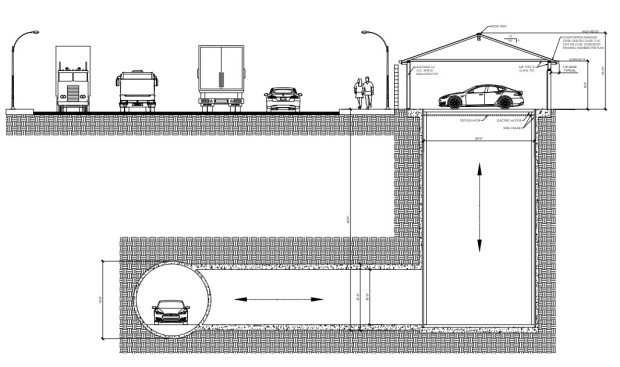
Fig 10: A visual prototype of the TBC tunnel presented by Elon Musk. (source)
The mission of the company is to alleviate traffic congestion by transporting vehicles on autonomous electric sleds at speeds up to 130 miles per hour through underground tunnels. The tunnels are designed to accommodate cars, freight vehicles, mass transit systems (such as buses and subways), pedestrians, and cyclists.
The vision of the company is to build safe, fast-to-dig, straight, and long tunnels; enable high-speed transport; provide an affordable solution to transportation congestion; create multiple levels of tunnels to increase capacity; use an electric sled system for cars and other vehicles; only transport people or goods not both at once; use autonomous vehicles on a fixed schedule.

Fig 11: A Tesla zipping through a tunnel in Las Vegas. (source)
Will The Boring Company be able to achieve its mission?
Elon Musk is a man of genius, and his company The Boring Company does not fail to excite. Currently, The Boring Company’s main objective is to build tunnels under Los Angeles with the hopes of reducing traffic. There are several reasons why this company will be successful in its endeavors.
Easy Tunnel Construction: The company has developed a system of tunnel construction that is faster and more cost-effective. Digging tunnels is no longer a huge hassle and eyesore for the community above ground. With this system, digging can be done at a quick pace with less manpower and equipment needed—all while creating less surface noise and vibration.
Weatherproof: The Boring Company’s tunnels are designed with weatherproofing in mind. No matter how bad the weather aboveground gets, it doesn’t affect your commute—which means you don’t have to worry about rain or snow stopping you from getting where you need to go. That also means you don’t have to worry about flooding or water damage if there’s heavy rainfall in your area—the tunnels will be able to handle it without issue.
Comfortable and Convenient: With The Boring Company’s technology, getting around can be both comfortable and convenient. Their tunnels are spacious enough for full-size vehicles like SUVs, but are also small enough for individuals on foot—so you can choose your transport based on your destination and your personal preferences rather than being stuck on whatever path the city has laid out for you.

Fig 12: Tesla’s tunnel boring machine called the Prufrock that has revolutionized the tunnel boring process with its fast speed. (source)
Easier To Create More Tunnels: Another advantage that The Boring Company has over other tunneling companies is the fact that it is much easier for them to create more tunnels. This is because Tesla’s machines can excavate more rock per day than older tunnel boring machines (TBMs) can. These newer machines are also able to do faster work than previous TBMs did because they have been designed with better sensors and software that allow them to be operated remotely without having any human operators present during excavation.
But on the contrary…
The company’s initiatives have been rejected by several states and cities because of safety concerns. The main reason for this rejection is that the tunnels lack important safety features, like emergency exit corridors, ventilation systems, and fire suppression systems.
1). The tunnels do not support an emergency exit system. In case of an emergency, such as a fire or earthquake, there must be an emergency exit from the tunnel. People who are trapped in tunnels without emergency exits are at risk of death from smoke inhalation or other causes.
2). There’s no ventilation system in the tunnels. This means that if there is a fire or other emergency underground, smoke will fill up the tunnel quickly and choke everyone inside. There’s also no fire suppression system—so if there is an electrical fire or something else that starts burning down your tunnel, you’re going to have to go find another way out before you suffocate.
3). They also do not have fire suppression systems, which means that if there were an explosion or fire in a tunnel, it could rage out of control before anyone noticed. This could lead to many deaths before firefighters could even get there.
4). Another biggest problem is that the tunnels are projected to be only one lane wide. This means that if there is an accident or mechanical failure, or any other traffic obstruction, it will have a domino effect on all other cars in the tunnel. If this happens, then all cars trying to pass through would be stuck until the malfunctioned car gets out of the way.
Several important projects have been dropped due to the above-mentioned reasons.
Therefore, Elon Musk needs to address the above issues on a high priority basis if he wants The Boring Co. to be a successful venture.
The Boring Company’s Recent Investments & Current Valuation
The Boring Company has raised more than $908 million in funding, with a recent raise of $675 million in April 2022. The current valuation of the company is $5.7 billion. This is up from the previous valuation of the company in July 2019, which was between $800 and $920 million.
4). Twitter

Fig 13: Image Source
On April 14, 2022, Elon Musk offered to purchase Twitter on April 25, 2022 for $43 billion. He has been trying to buy the company for some time now. Musk’s interest in buying Twitter was sparked by his desire to advance the platform and make changes to its design and structure. He also wanted to help protect it from censorship and meddling from foreign governments.
The board of directors at Twitter was hesitant at first because they were concerned about losing their independence after being taken over by a larger company. However, they eventually agreed. But as of May 2022, the said deal is on hold due to Elon Musk’s concerns about fake and spam twitter accounts.
What is Elon Musk’s master plan for Twitter?
a). Elon Musk wants to make Twitter a private company.
First, the company will be able to focus on its core users and product, and by making your timeline better and improving the quality of tweets overall.
Second, privatizing Twitter would allow Elon Musk to quickly implement new features or make significant changes in policy or direction.
Thirdly—and perhaps most importantly—privatizing Twitter would allow Elon Musk to remove any outside influence from investors who might want to sell their stock at some point down the road.
b). He wants to free the world from censorship and content moderation policies on Twitter.
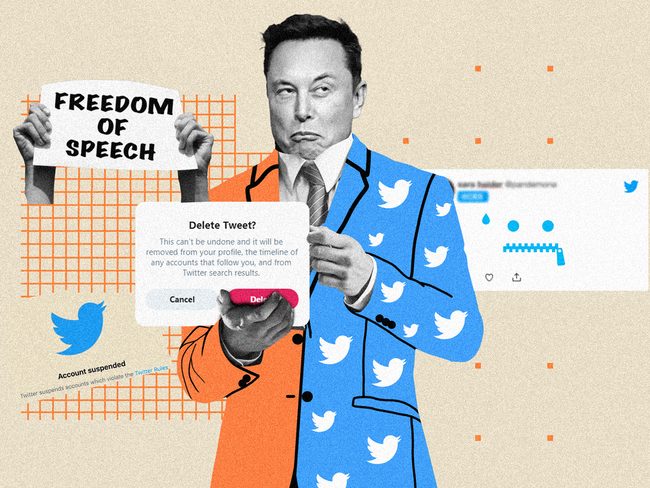
Fig 14: Image Source
Elon Musk believes that Twitter should be a place where people can speak their minds without fear of being censored, and he wants to make sure that all users feel safe on Twitter. Elon Musk is not happy with Twitter’s current content moderation policies, which he believes are too strict.

Fig 15: Elon Musk decided to introduce an Edit Tweet button after a majority of Twitter users agreed in favor of this feature in a recent poll on Musk’s official Twitter account. (source)
c). Elon wants to add an “edit tweet” button. This button will enable users to correct mistakes quickly and easily.
d). Elon wants users to pay for Twitter Blue subscriptions with Dogecoin. This will make it possible for anyone who uses cryptocurrency to subscribe without feeling limited by their payment options. Since Dogecoin is a popular cryptocurrency among Elon’s followers, this move makes sense from a business standpoint as well.
e). Third and finally, Elon wants to eliminate spam bots from Twitter. These bots can be annoying and even dangerous, so removing them is a priority to make Twitter safer for everyone who uses the site.
Conclusion:
While there is certainly a lot of buzz around all of the Elon Musk companies, it’s unclear how long each will last or how much value they will add to their shareholders. With that being said, each company added to his roster has made him one of the most influential entrepreneurs of our time and come a long way in shaping what is likely to be a legacy worthy of the history books. It remains to be seen whether Musk can stay on top as the years roll by, but given his track record thus far, few would bet against him achieving new feats in the future.



